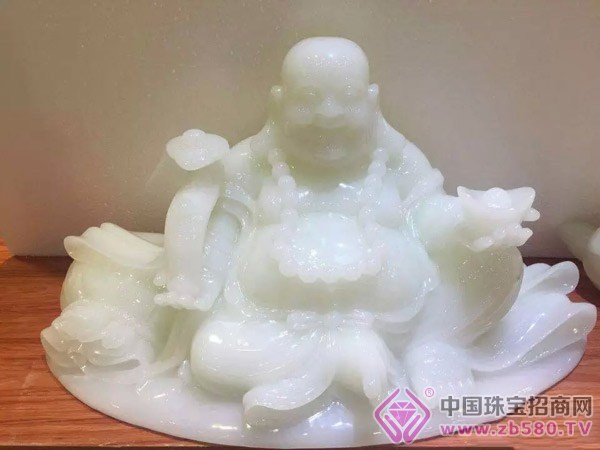Recently, some newspapers reported that Hualin jade "Tianguang Market" has been in contact with the rectification and has already left Jade Street. There are even more reports that the "Tianguang Market" activity has been stopped since June this year and has been four months since. As soon as the report came out, many old Guangzhou friends said it was a pity. So, what kind of story is there behind Hualin Temple’s “Tianguang Market�
The so-called "Tianguang Market" is a special market where the day starts in the morning or in the middle of the night and the sky is finished. Generally speaking, it is mainly used to store second-hand cheap goods such as furniture, utensils and home clothes, as well as antiques, jade articles, calligraphy and paintings, ancient books and potted plants. The Tianguang Market in front of Hualin Temple specializes in the sale of jade articles. In addition, the more famous Tianguang Market in the past, as well as the “Road Road Skylight Market†located at Zhongshan 7th Road today. Speaking of the history here, it is the earliest Tianguang Market in Guangzhou. As far as jade processing is concerned, it is the earliest jade ware in Chinese history, and the era is far earlier than the jade wares of Beijing, Shanghai and Tianjin. Today, this prosperous jade shop is also a street based on the tradition of buying and selling jade articles at Tianguang Market.

In the Ming and Qing dynasties, Guangzhou's water and land transportation was increasingly developed, commercial activities were frequent, and the jade carving industry gradually prospered. After the abolition of the artisan management system in the early Qing Dynasty, skilled craftsmen from all over Guangdong concentrated in Guangzhou. It turns out that the Ming Dynasty followed the artisan system of the Yuan Dynasty and divided the households into the people, the army, and the craftsmen. After the craftsmen were enlisted, they were inherited from generation to generation, and they were not allowed to leave their homes, and they were not allowed to live separately. It was not until the Shunzhi period of the Qing Dynasty that the artisan system was declared abolished. The craftsmen have restored more personal freedoms and have come to Guangzhou, where the trade is developed, so that the production and operation of folk jade can flourish. As early as in the Kangxi period, Guangzhou merchants selling several industries such as satin, pearl, jade, medicinal materials, etc. purchased the Xiancheng Hall in the No. 3 Wangpi Hutong outside Beijing's Qianmen, and carved a monument to the monument. The inscription records "who is surrounded by pearls, glass, The jadeite and the corals are the wrong ones. This proves that the merchants of the Guangzhou jade wares had already tribute to the emeralds in Beijing.
During the Daoguang Period of the Qing Dynasty, the jade industry established a guild organization and established a strict rules and a system of scholars. This shows that the degree of maturity and standardization of the Guangzhou jade market at that time was a benchmark for the industry in China. Around the same year, the jade street in the Hualin Temple area gradually formed. This street was later named “Jadeware Squareâ€. In the 1930s, the Guangzhou jade industry entered its heyday. At that time, Daxin Road, Wende Road, Changshou Road, Wenchang Road and Dahe Road all concentrated a lot of jade articles.
It is said that there is a section of Gu Zi, it is said that the jade bracelet worn by the Empress Dowager Cixi is also from the jade wares of Guangzhou. According to Li Xinying’s nephew of the late eunuch in the late Qing Dynasty and Li Chengwu’s "Ai Yuexuan Notes", which was recorded in the secret burial of Cixi Jewelry, there are many valuable jadeites in the funeral of the Empress Dowager Cixi. Among them, there are two pairs of jade bracelets and an emerald lotus. Leaves, especially to meet the owner's preference for jade. Some people speculate that these jade articles should be purchased from Guangzhou. However, because the tomb of Cixi was stolen by Sun Dianying and his people, now we can only see the treasures of these treasures from photos and oil paintings.
Until 1988, Hualin Jade Street was built, and Jadeware Square changed its name. This new jade street starts from Xilaizheng Street on Xiajiu Road, Guangzhou Commercial Pedestrian Street, and goes to Xinsheng Street on Changshou West Road in the north. There is a fixed shop for jade trading. Soon, it became one of the famous jade jewelry sales and distribution centers in the province and even the whole country. However, despite the fact that the customs of the Tianguang Market in ancient times continued here, it was only terminated this year.
Pink Cargo Pants,Black Flare Pantts,Black Wide Leg Pants,Raw Hem Jeans
SHAOXING RUIZI IMPORT&EXPORT CO.,LTD , https://www.ruizigarment.com